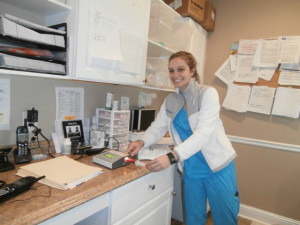Archive for March 2014
Stem Cell Diabetes Treatment
Stem cell diabetes treatment is a rapidly growing field that holds many promises for treating both child and adult diabetes.
What Are Stem Cells?
Stems cells, which are biological cells, are found in all multi-cellular organisms. These cells can divide and differentiate into cell types that are specialized. Stem cells are able to renew and produce additional similar cells.
Humans have two types of stem cells:
Embryonic Stem Cells – which come from embryonic cells.
Adult Stem Cells – which are found in bone marrow, fat cells, and blood.
History of Stem Cell Therapy
The term “stem cell” was first proposed for scientific use by Alexander Maksimov in 1908.
Stem cell therapy has been around for over 25 years, starting with bone marrow and umbilical-cord blood stem cells to treat patients with cancer, spinal cord injuries, heart damage and neurological disorders. This rapidly developing field requires the skills of cell biologists, geneticists, physicists and many other dedicated professionals to move forward.
The first confirmed reversal of autoimmune-caused Type 1 diabetes in an animal experiment was reported in 2009 by Yong Zhao and his colleagues.
The safety and positive results of stem cell therapy have now been proven in over 1500 clinical trials in the United States and all over the world.
Stem Cell Treatment Advantages
- Uses the latest technologies
- Same day outpatient treatment (usually 5 – 8 hours)
- Uses a patient’s own stem cells
- Local or no anesthesia is needed
- There are very limited side effects
- Has a higher potential for regeneration of nerves, tissues and organs
- Higher age groups are candidates for treatment
Stem Cell Treatment Steps
- 10 -20 ml of blood is collected from an upper limb.
- Fat collection is carried out from the lower stomach or buttocks (a mini-liposuction technique is employed). About 60 ml is needed.
- Lipoaspirate is used to isolate the stem cells.
- The blood is placed in a centrifuge and spun, separating the blood components. This will result in Platelet Rich Plasma (PRP), which are platelets, which include growth factors.
- The stem cells are placed in a specialized machine, which activates the cells by using three light frequencies simultaneously.
- The activated stem cells are now given via an intravenous drip (IV) to the patient.
Where to Get Stem Cell Treatment
There are now more clinics and treatment centers that offer Stem Cell Treatment for Diabetes. In addition, many Naturopathic Physicians now offer this treatment option as an outpatient service.
Here is an interview (2 parts) with Naturopathic Physician Dr. Hank Sloan of The Genesis Center in Cumming, GA. He discusses stem cell treatment and applications.
